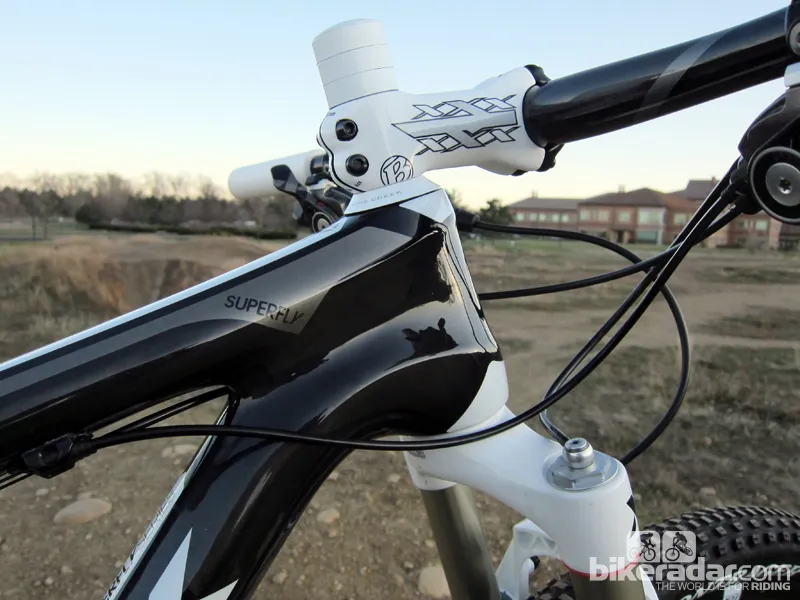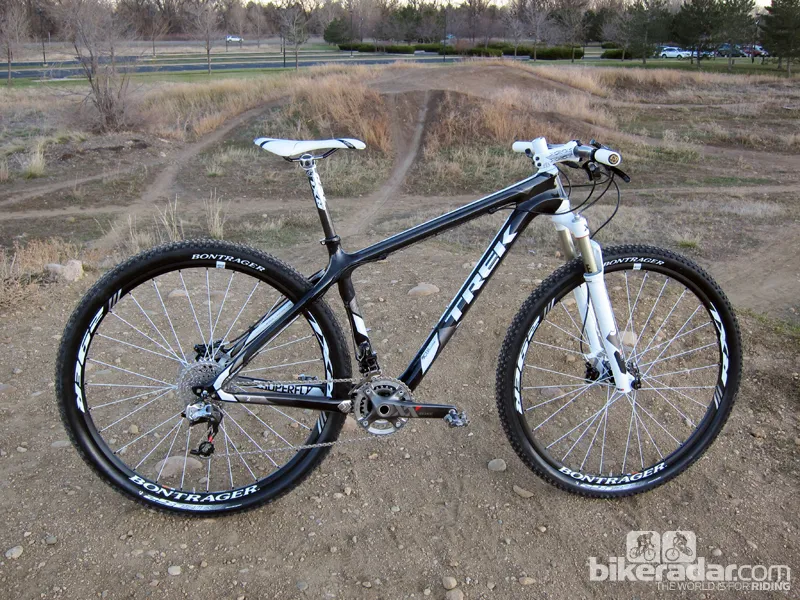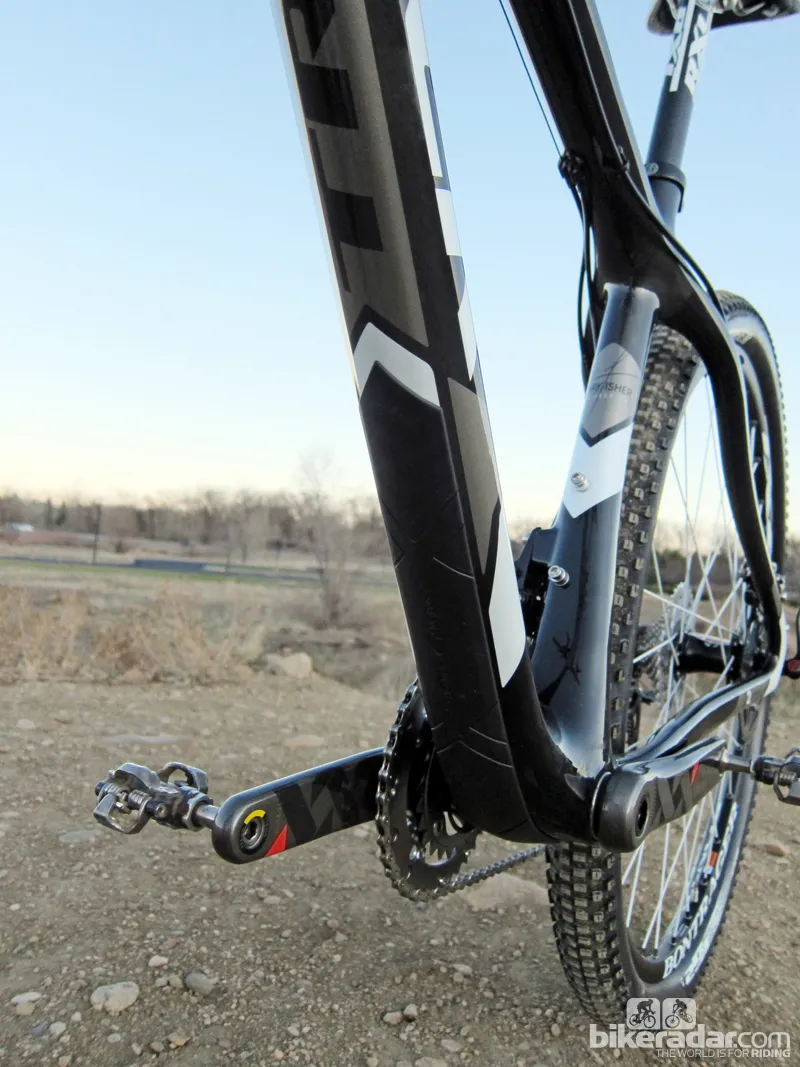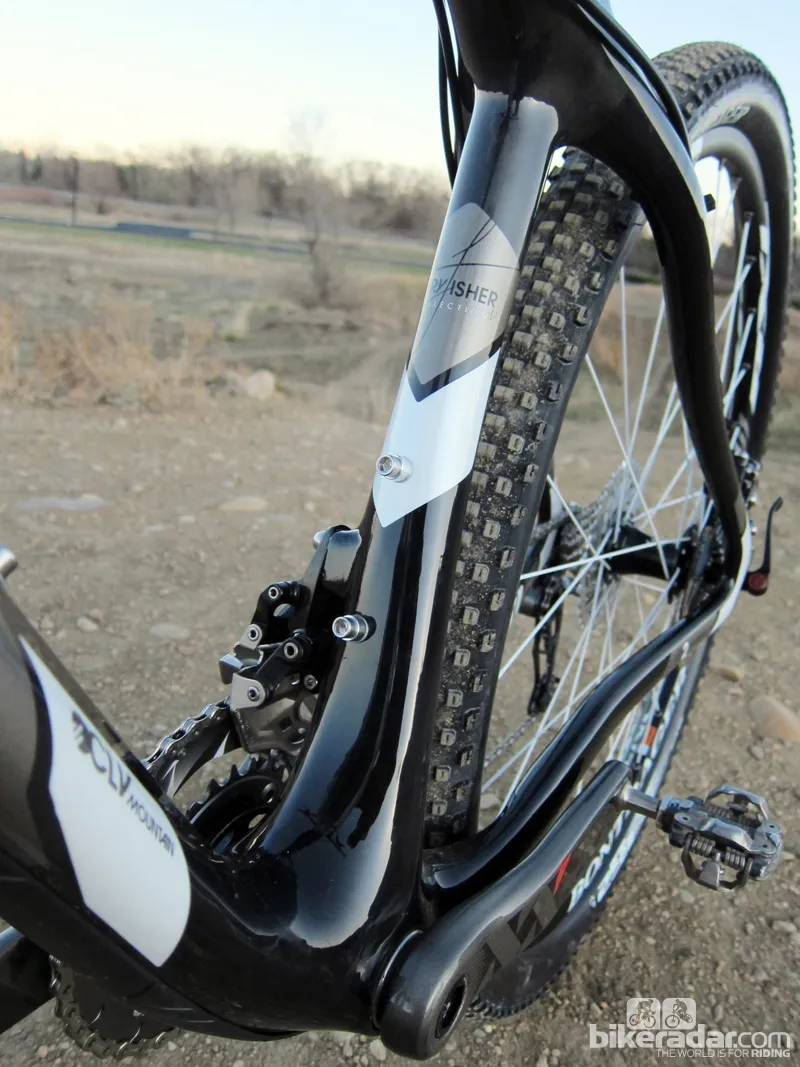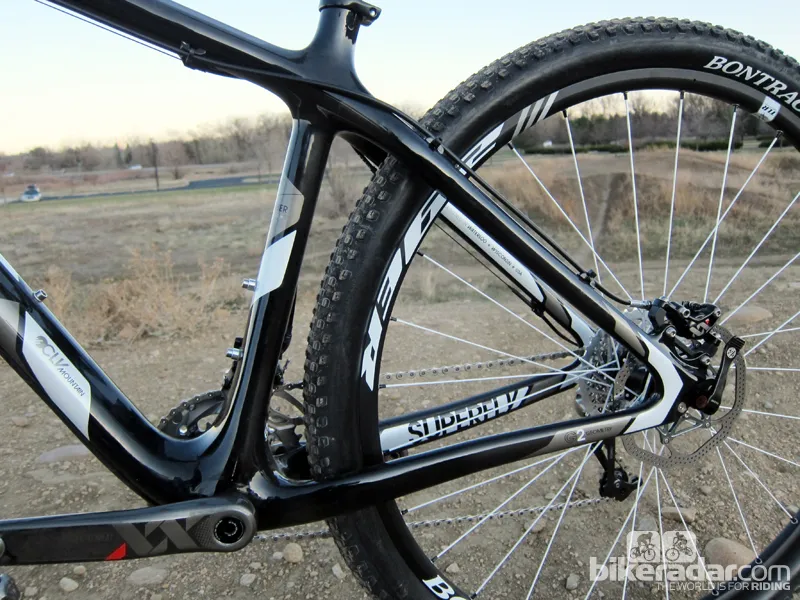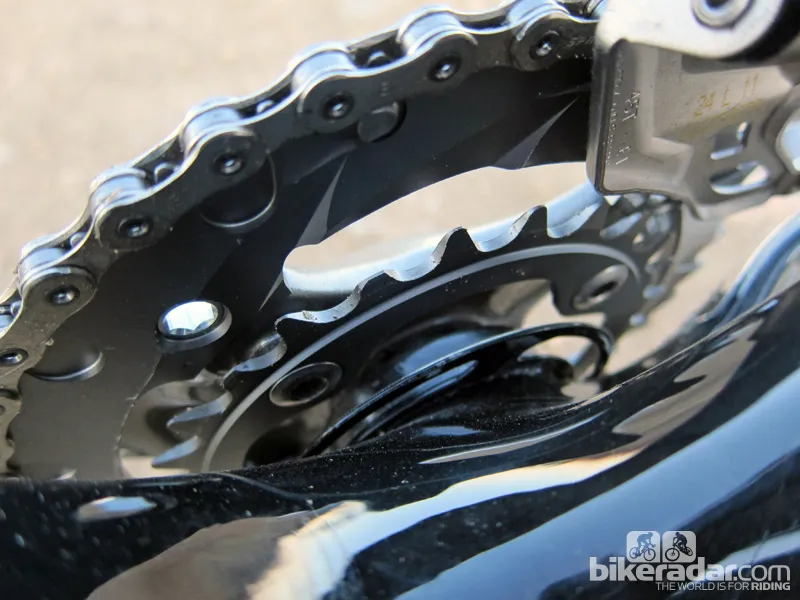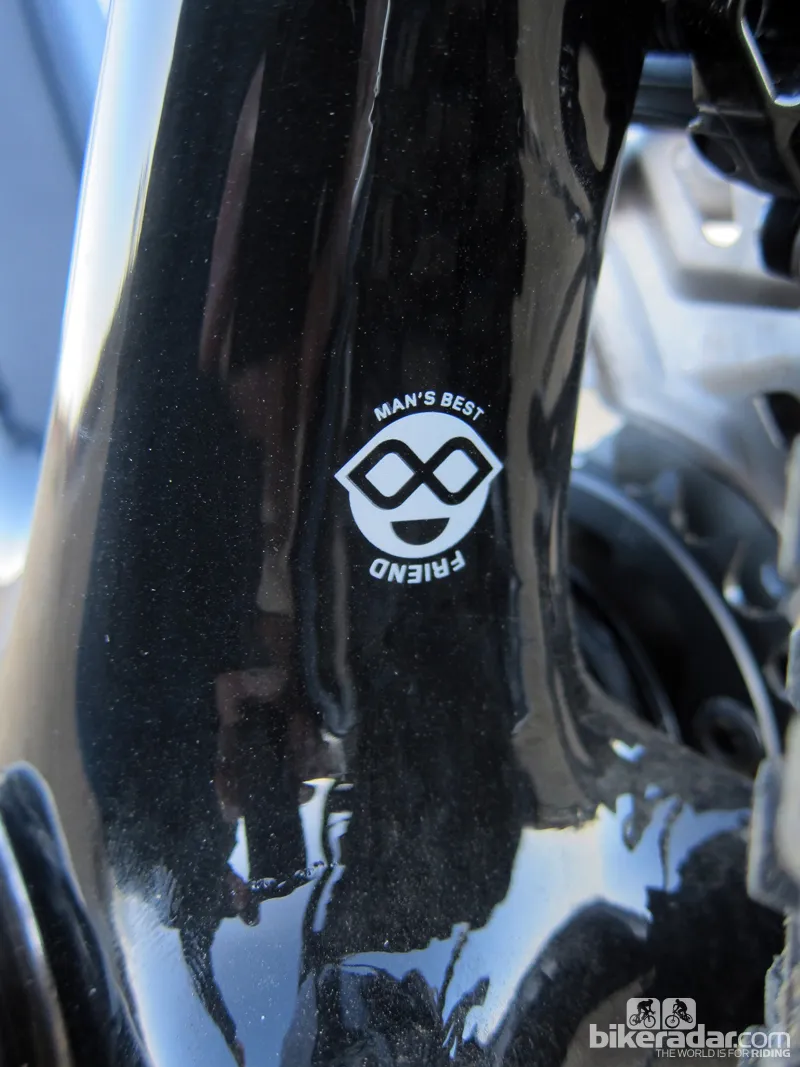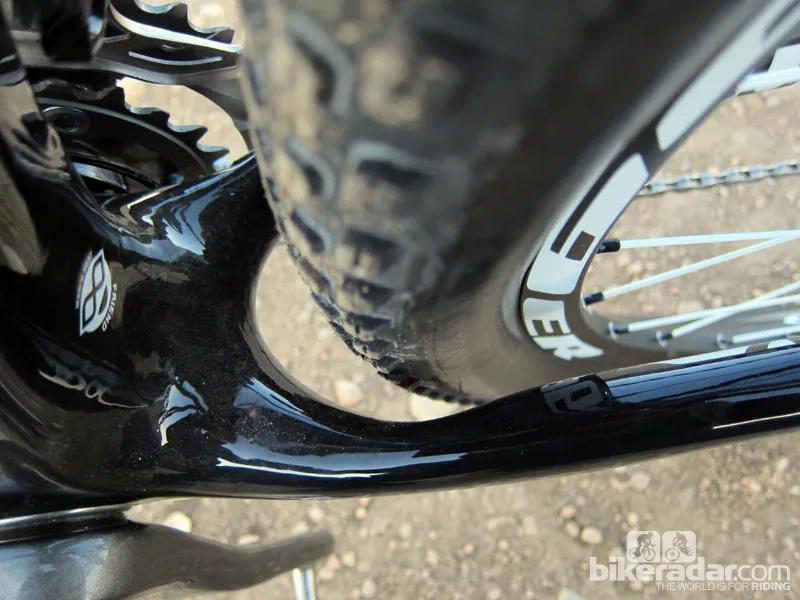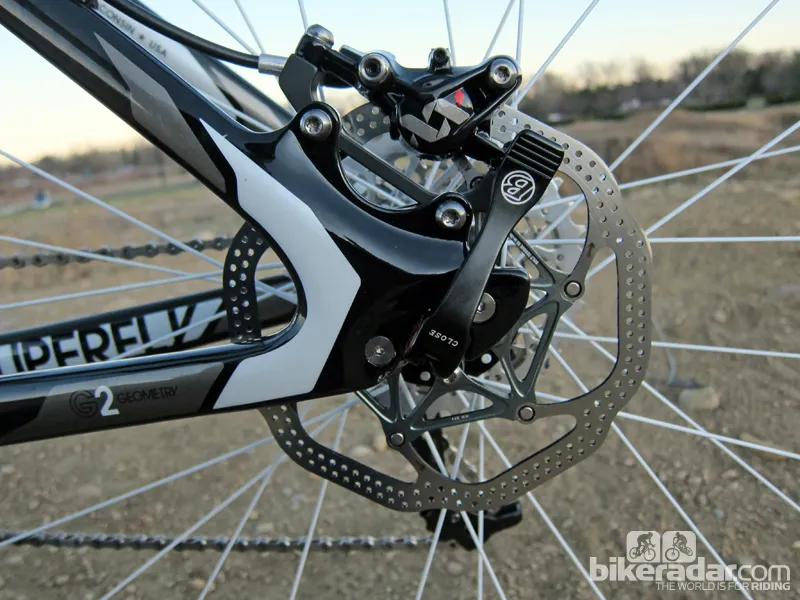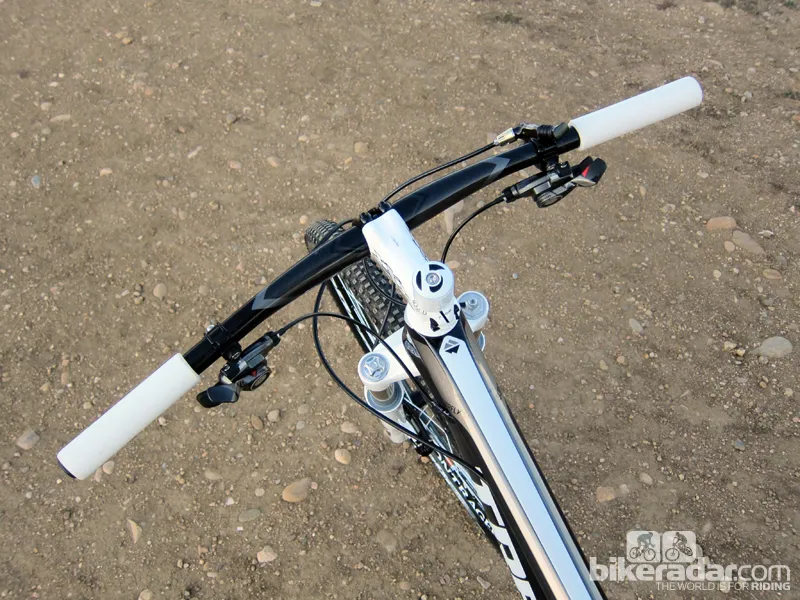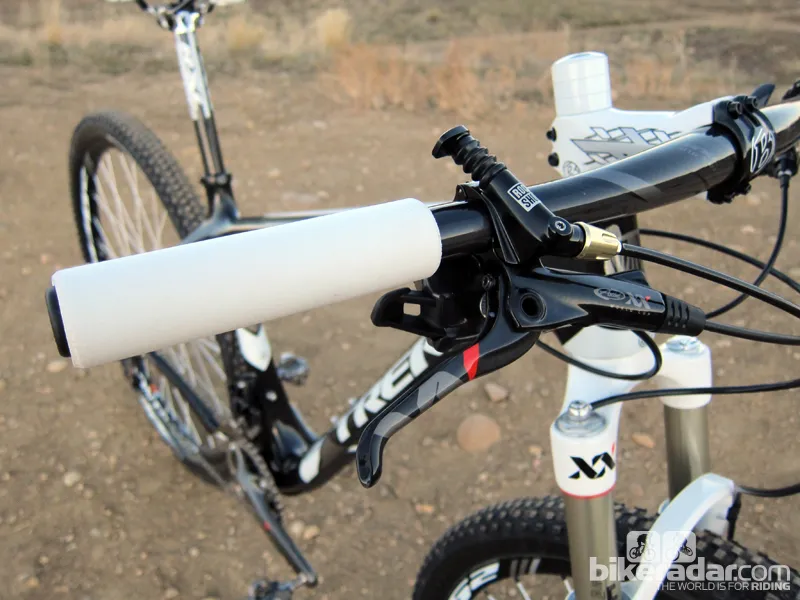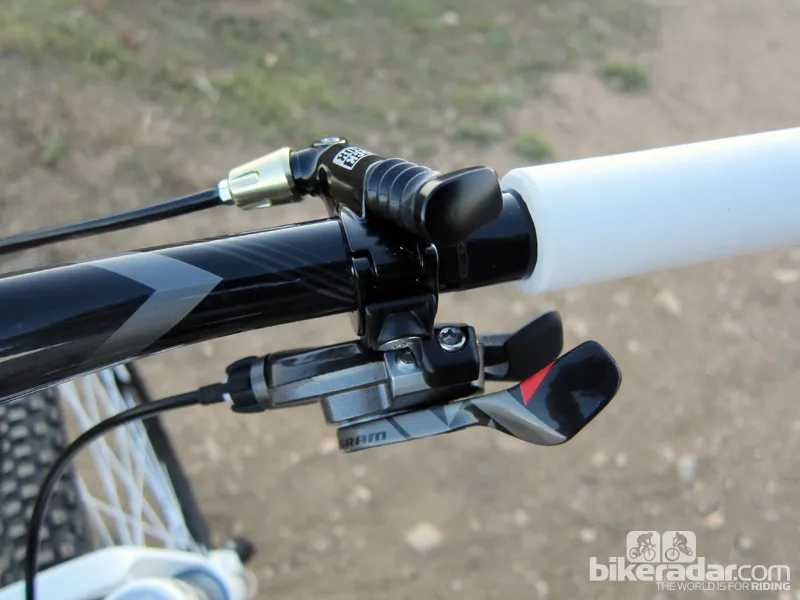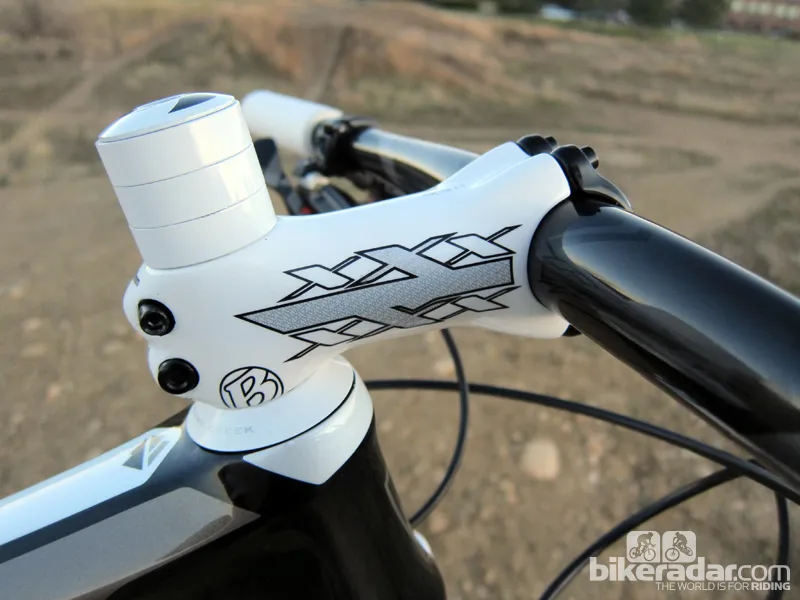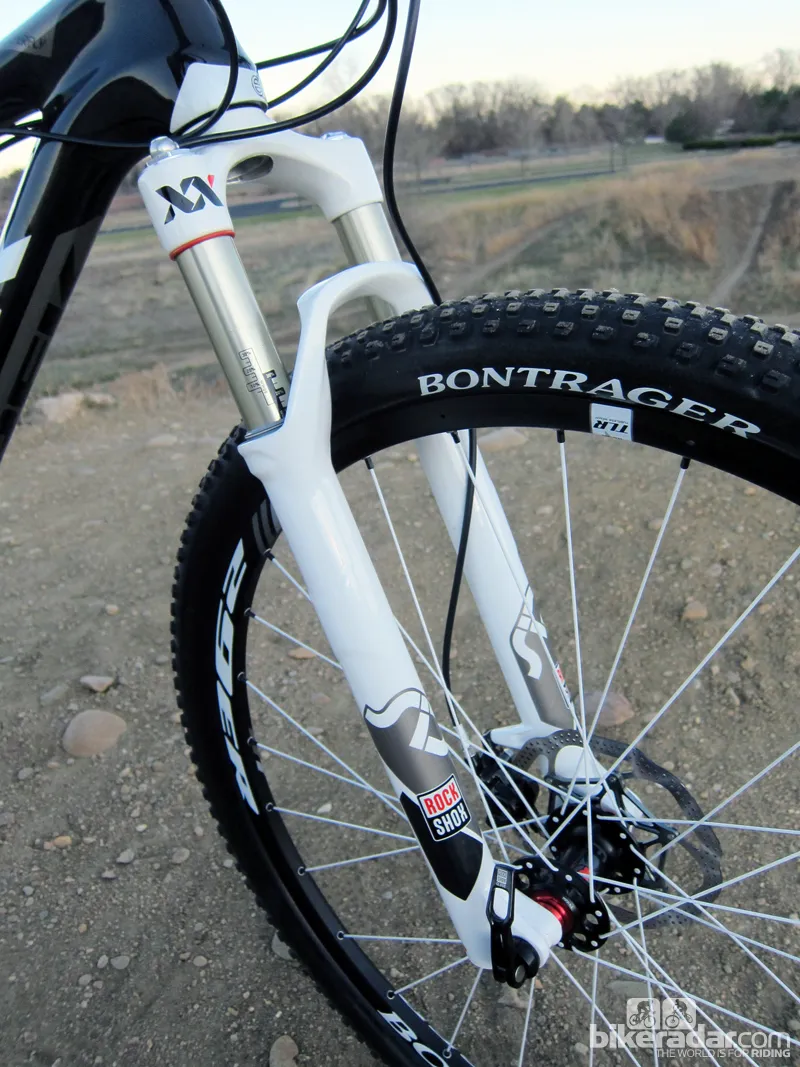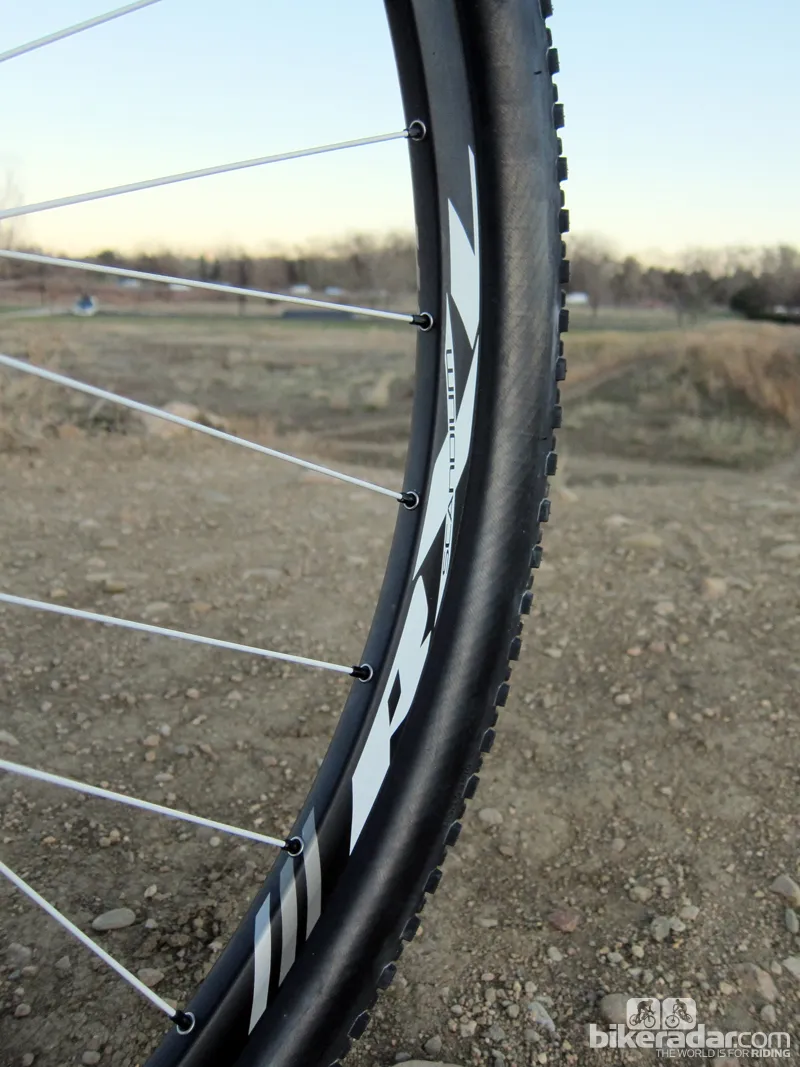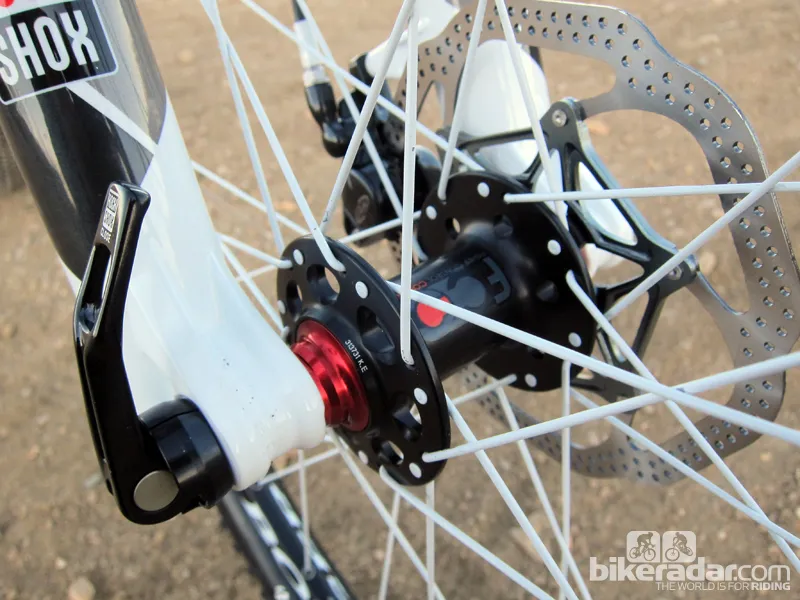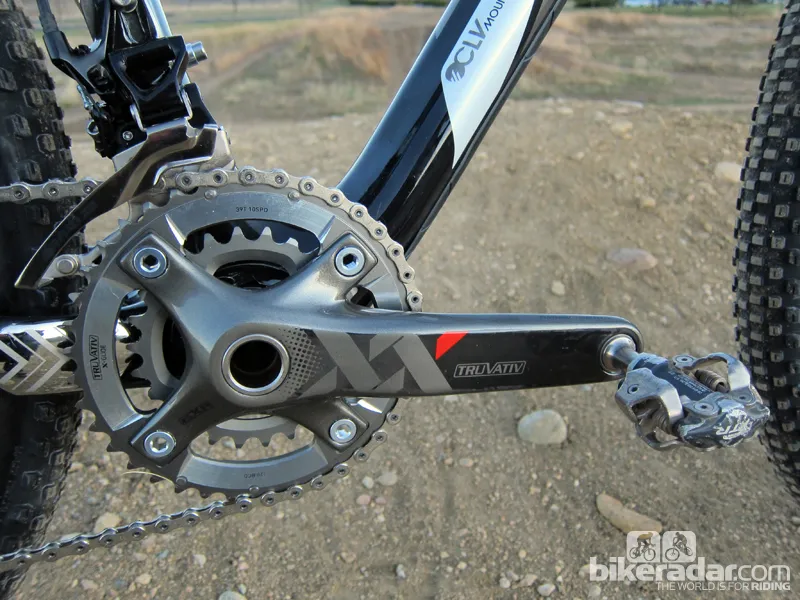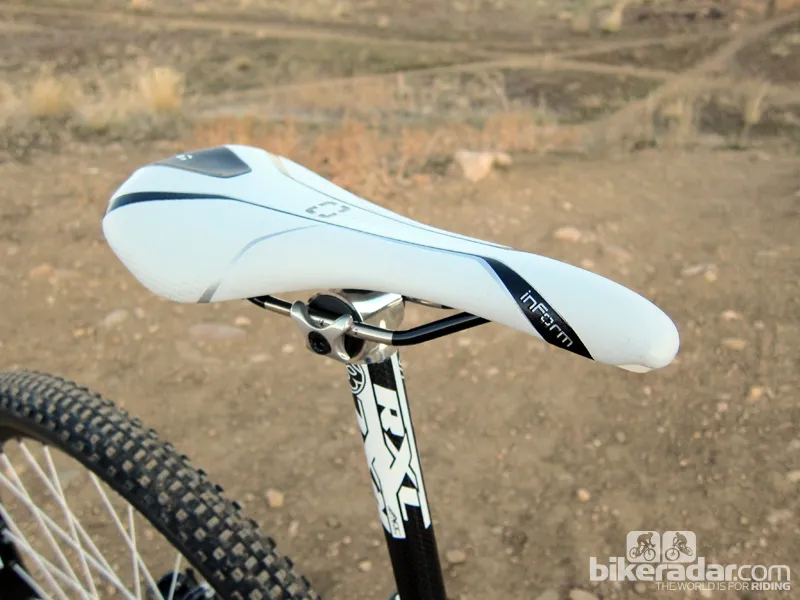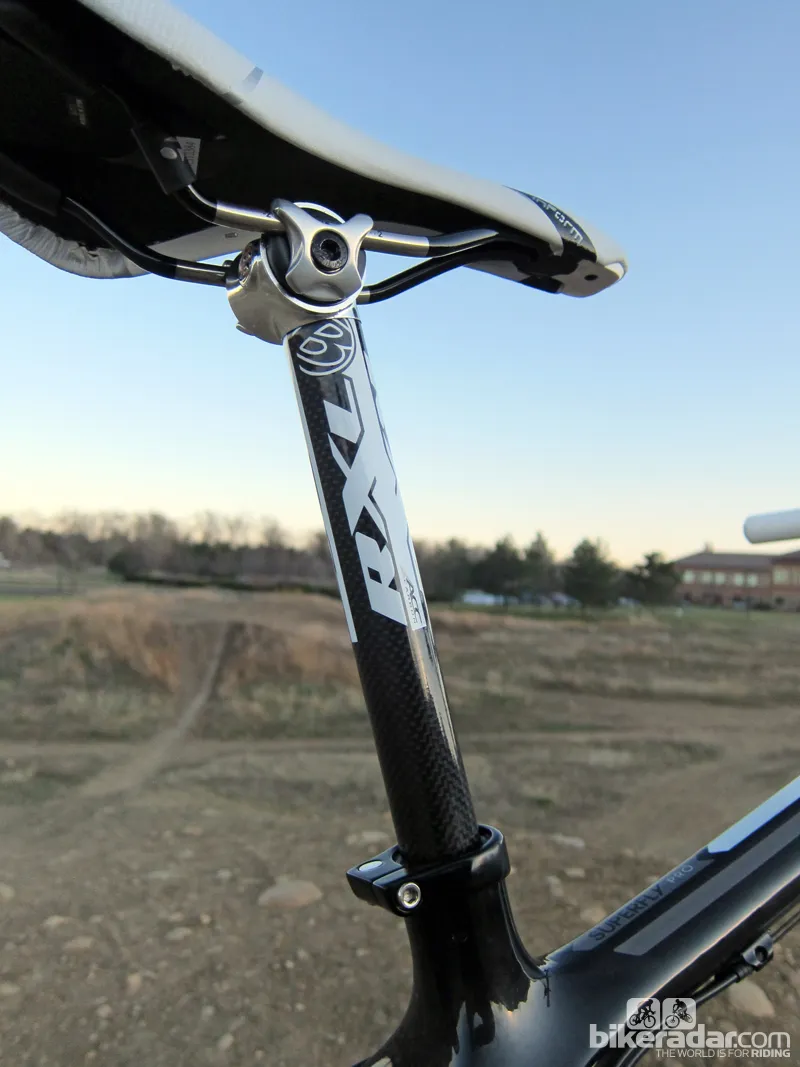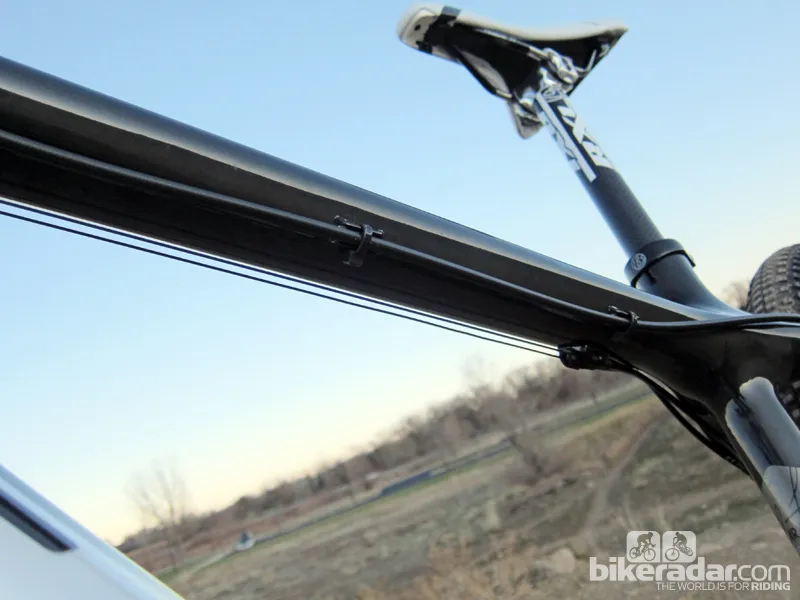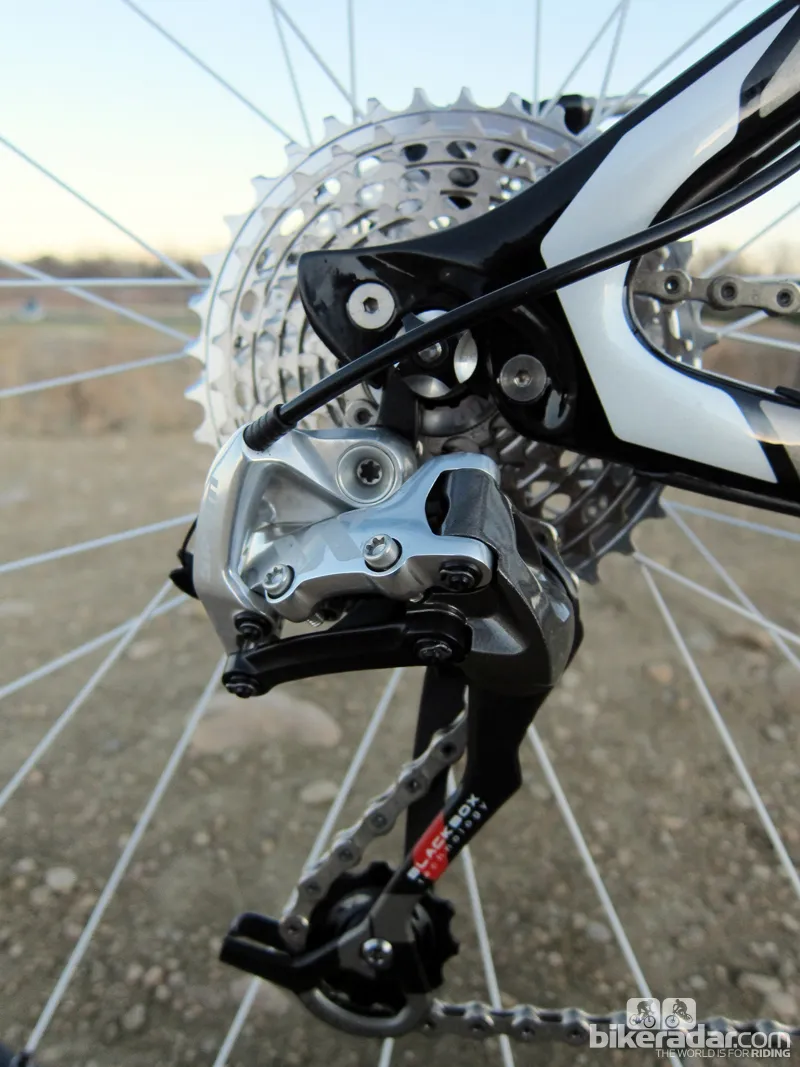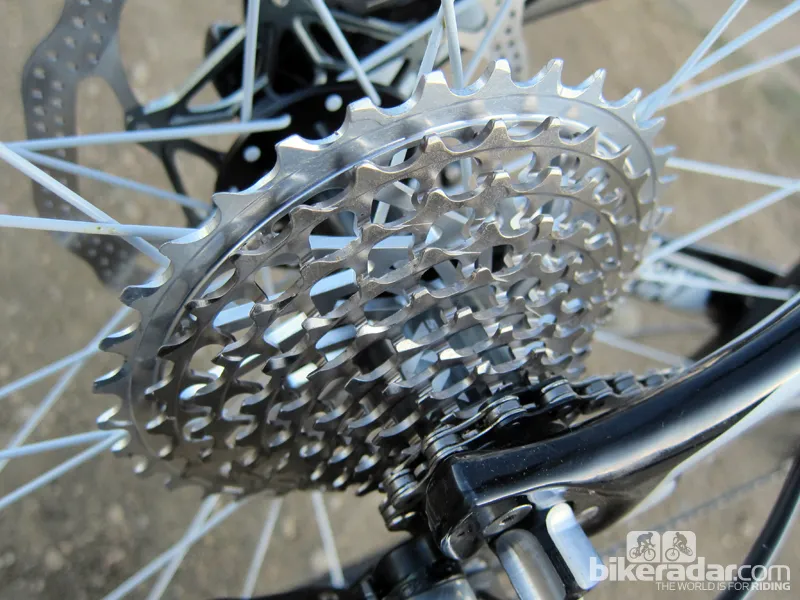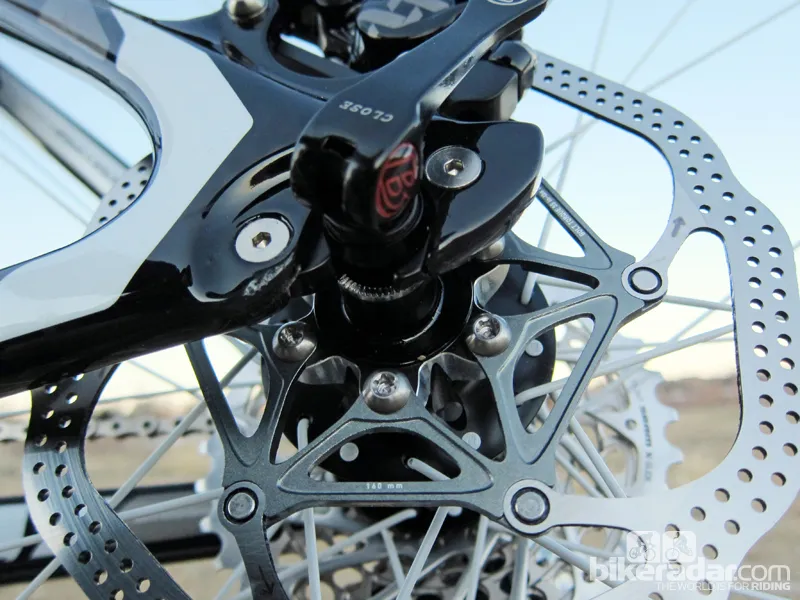The 2012 Trek Superfly Pro builds on the success of last year's Superfly Elite carbon 29er hardtail, adding an upgraded spec that lops a full pound off the build plus a through-axle and better tires that improve its overall usability. It's speedier and more fun to ride than before but that extra performance carries with it a hefty price premium.
Ride & handling: Excellent G2 geometry, stiff all around
The 2012 Superfly Pro essentially wears the same frame as last year's Elite so, not surprisingly, our list of likes and dislikes carries over, too. Handling is once again especially sweet, given Bontrager's trick G2 fork crown offset and its resultant trail, which mimics that of a 26in bike and generates a particularly light feel up front for a big-wheeler. Close confines at low speed, in particular, are no problem for the Superfly's nimble personality and we never felt like we were fighting the front end, even on tight uphill switchbacks.
High-speed handling is reassuringly stable for a dedicated cross-country bike, too, thanks to a smart 69.3-degree head tube angle that retains quick steering without feeling unnervingly twitchy and a low bottom bracket that keeps your center of gravity close to the ground. Coupled with the big wheels, there was generally little drama when mindlessly bombing through rock gardens but that same low bottom bracket will produce more than a few pedal strikes if you're not mindful.
Given the bike's racing intentions, it's no surprise that it's dutifully quick under power. Stiff carbon fibers and monstrous tube cross-sections – including Trek's ultra-wide 95mm bottom bracket shell and broadly spaced chainstays – yield a stout backbone and firm foundation for big pedaling efforts. Likewise, very good front triangle torsional rigidity keeps the bars from moving excessively when you're sprinting or climbing out of the saddle.
Add in the bike's impressive 9.66kg (21.30lb, complete, w/o pedals) weight and it's no surprise that the Superfly Pro is a perfect companion for long climbs. Riding position is similarly race-ready with a puny 103mm-long head tube on our 17.5in tester that produced a suitably low hand position when paired with a slightly negative-rise stem and flat bar.
Though stiff, the Superfly Pro isn't quite as unyieldingly efficient as some other machines we've tested recently. Likewise, ride comfort falls a bit shy of the best examples in the market with a rear end that filters out high-frequency buzz but doesn't offer much vertical flex to speak of. Trek attempt to ameliorate this with the Superfly Pro's slim 27.2mm-diameter seatpost but even that effort is thwarted by the Bontrager Race X Lite ACC post's aluminum core.
Despite this, overall comfort has improved over last year's Superfly Elite. The new Bontrager 29-1 tires are generously sized at 2.2in across and suitably floaty for all-around trail duty yet still roll extremely quickly thanks to the ramped, low center knobs. Add in the 15mm through-axle fork dropouts and the noticeable bump in front-end stiffness relative to last year's open dropouts, and the Superfly Pro is not only slightly more comfortable and a bit faster than before but also a more suitable all-around trail machine, too.
Frame: Huge cross-sections, wide spacing
In typical fashion, Trek infuse the Superfly Pro with lots of smart engineering but don't stray too far from convention in terms of tube shaping. Key features include a tapered 1-1/8 to 1-1/2in head tube and a 95mm-wide bottom bracket shell – both with molded-in carbon fiber bearing seats. There's also a highly asymmetrical seat tube, carbon dropouts with bolt-in aluminum plates and standard 135mm spacing, and especially wide-set chainstays that lend lots of tire clearance
A neat touch is the bonded-on rubberized plate on the down tube underside to ward off impacts from trail debris – something we made liberal use of on Colorado's notoriously rocky terrain. Frame weight is impressive, though not groundbreaking, at 1,340g including the rear derailleur hanger, seatpost collar, water bottle bolts, and chain stay and down tube guards (which aren't easily removable). Cables are externally routed beneath the top tube for easy maintenance and the front derailleur bolts directly to the seat tube to minimize positioning errors.
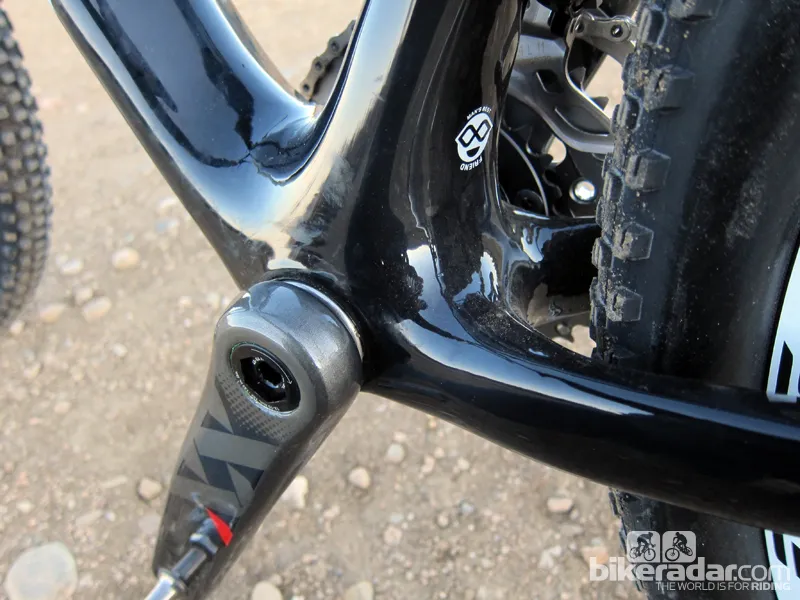
Equipment: Race ready but still trail friendly
As Trek's flagship cross-country race machine, little expense has been spared dressing up the Superfly Pro frame. Shift performance from the ultralight SRAM XX group was once again fantastic with uncannily positive and fast front shifts – even under climbing or at low cadence – coupled with impeccably precise and consistent rear shifts. In short, gear changes were simply something we never gave a second thought about during testing.
Likewise, the RockShox SID XX 29 fork was well suited for the task with an impressively sturdy chassis, smooth and smartly progressive action through the 100mm stroke, and a well-tuned damper that tackles both trail buzz and bigger hits with equal aplomb. More demanding and complicated sections of trail are still better handled by RockShox's more sophisticated Motion Control BlackBox damper but given the bike's cross-country focus, we're guessing most users will be willing to sacrifice a bit of ride control for the convenient XLoc hydraulic remote lockout lever.
We unfortunately can't heap the same level of praise on the Avid XX brakes. Lever feel, power, modulation and ergonomics were all excellent but both ends squawked loudly under hard braking – wet or dry, and regardless of pad or rotor condition. Both brakes were reliable throughout testing, but only after we bled the front straight out of the box.
The vast majority of the included Bontrager kit is excellent, in particular the Race X Lite Carbon Big Sweep flat bar with its comfy 12-degree bend, the comfortable and maneuverable Evoke 4 titanium railed saddle, and the fantastic 29-1 tires with their supple, high-volume casings, fast roll and surprisingly confident grip in all but marbles and mud.
As we noted last year, though, we'd still prefer to see a different seatpost included as the carbon-wrapped aluminum Race X Lite ACC model is too stiff to take advantage of its small 27.2mm diameter. We traded it out for Bontrager's softer – and lighter – Race XXX Lite all-carbon model and instantly got a big boost in ride comfort.
The included Bontrager Race X Lite FCC wheels are conveniently tubeless-ready (as are the tires, though the requisite rim strips and valve cores annoyingly aren't included with the bike) and they feel both stiff and sturdy enough for genuine trail use, not just race duty. Thankfully, we never experienced any of the unnerving pinging and popping from the freehub body that we encountered with last year's Bontrager hubs. However, they're a little heavy for a bike of this level, particularly given the premium US$6,829.99/£5,000 asking price.
One place we're happy not to see the Bontrager label, however, is on the grips. Last year's foam grips were light but too narrow, prone to rotating on the bar and uncomfortable. Trek have wisely switched to ESI's silicone foam rubber grips, which are still super-light but far more shock absorbent, grippier in your hands and far less apt to move. Perhaps the best testament is the fact that even Trek's own Subaru-Trek professional team have used these for years.
Overall, the Trek Superfly Pro is a top-shelf ride and undoubtedly a better bike than the Elite model we tested last year – but then again, it should be considering it's roughly US$2,000 more expensive. It won't be a world beater, however, until it gets nicer wheels, a softer seatpost and a more refined ride quality.
